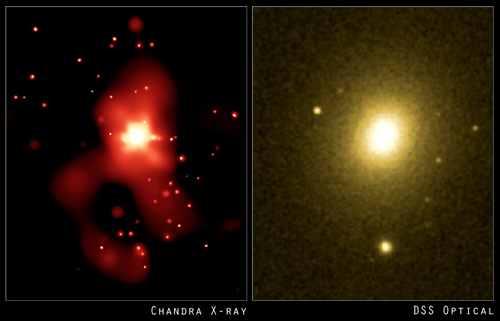NGC 4261: An elliptical galaxy about 100 million
light years from Earth.
Caption: Chandra's image of NGC 4261 reveals dozens
of black holes and neutron stars strung out across tens of thousands of
light years like beads on a necklace. This spectacular structure, which
is not apparent from the optical image of the galaxy, is thought to have
been caused by a collision between galaxies a few billion years ago. As
a smaller galaxy was captured and pulled apart by the gravitational tidal
forces of NGC 4261, large streams of gas were pulled out into long tidal
tails. Shock waves in the tidal tails triggered the formation of large numbers
of massive stars, which eventually evolved into X-ray emitting neutron stars
and black holes. This image shows that X-ray observations may be the best
way to identify the ancient remains of mergers between galaxies.
Scale: Each panel is 237 x 290 arcsec.
Chandra X-ray Observatory ACIS Image
|


